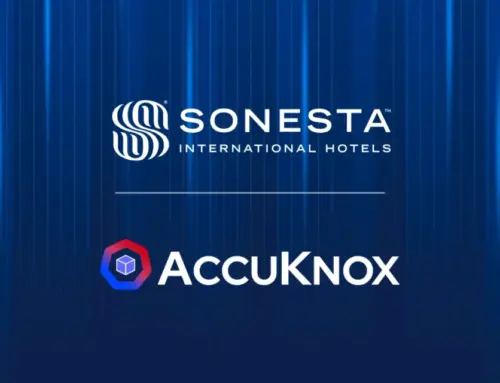
Weak Password Let Ransomware Gang Destroy 158-Year-Old Company
The Single Password Catastrophe: How Weak Security Doomed a 158-Year-Old Company
The digital age often brings unparalleled opportunities, but it also harbors significant risks. The recent demise of KNP Logistics serves as a stark, sobering reminder of this dichotomy. A single, compromised password, not a complex zero-day exploit or sophisticated nation-state attack, was all it took for a ransomware gang to dismantle a 158-year-old British institution, putting 730 devoted employees out of work. This devastating incident underscores the critical necessity of robust cybersecurity practices, starting with the most fundamental element: password strength.
KNP Logistics: A Legacy Unleashed by Ransomware
KNP Logistics, a long-standing Northamptonshire-based company, became the latest casualty in the relentless wave of cybercrime. The specifics of the attack are chilling in their simplicity: one weak password is believed to have granted attackers the keys to their entire operation. This access facilitated a ransomware deployment that crippled their systems beyond recovery. The financial and operational paralysis that ensued proved insurmountable, leading to the company’s abrupt closure and the widespread job losses.
While the exact technical vectors for the initial password compromise are not publicly detailed, common attack methods include:
- Phishing: Deceptive emails designed to trick employees into revealing credentials.
- Brute-Force Attacks: Automated attempts to guess passwords, especially weak or common ones.
- Credential Stuffing: Utilizing credentials leaked from other breaches to gain access, relying on users reusing passwords.
- Malware (Keyloggers): Software designed to record keystrokes, capturing passwords as they are typed.
The Anatomy of a Cyberattack: Beyond the Password
While a weak password was the initial entry point for the KNP Logistics breach, the subsequent destruction highlights failures in broader cybersecurity posture. Once inside, ransomware gangs typically:
- Escalate Privileges: Gain higher-level access within the network.
- Move Laterally: Explore and map the network, identifying critical systems and data.
- Disable Security Controls: Attempt to shut down antivirus, firewalls, and backup solutions.
- Deploy Ransomware: Encrypt critical data and systems, rendering them inaccessible.
- Exfiltrate Data: Steal sensitive information for double extortion purposes, threatening to leak it if the ransom isn’t paid.
The KNP Logistics incident serves as a grim case study that even venerable companies are not immune to the devastating impact of these multi-stage attacks, especially when fundamental security safeguards are overlooked.
Remediation Actions: Fortifying Your Digital Defenses
Preventing a KNP Logistics-style disaster requires a multi-layered, proactive approach. Here are critical remediation actions and best practices:
- Implement Strong Password Policies: Enforce complexity, length, and regular rotation. Encourage passphrases over simple passwords.
- Mandate Multi-Factor Authentication (MFA): This is arguably the single most effective control against credential compromise. Even if a password is stolen, MFA prevents unauthorized access. Implement MFA across all critical systems, including email, VPN, and operational applications.
- Regular Employee Training: Educate staff continuously on phishing awareness, social engineering tactics, and the importance of cybersecurity hygiene. Employees are often the first line of defense.
- Patch Management: Regularly update all software, operating systems, and network devices to patch known vulnerabilities. For instance, a common vulnerability like CVE-2023-23397 (a Microsoft Outlook elevation of privilege vulnerability) can be exploited if systems are not patched.
- Robust Backup Strategy: Implement the 3-2-1 backup rule (3 copies of data, on 2 different media, with 1 off-site). Test backups regularly to ensure recoverability. Isolate backups from the network to prevent ransomware encryption.
- Network Segmentation: Divide your network into smaller, isolated segments. This limits lateral movement for attackers if one part of the network is compromised.
- Endpoint Detection and Response (EDR)/Antivirus: Deploy advanced EDR solutions to detect and respond to suspicious activity on endpoints.
- Incident Response Plan: Develop, document, and regularly test a comprehensive incident response plan. Knowing how to react swiftly can significantly mitigate damage.
Tools for Enhanced Security Posture
Leveraging the right tools can significantly enhance an organization’s defense capabilities.
| Tool Name | Purpose | Link |
|---|---|---|
| LastPass Enterprise / 1Password Business | Enterprise Password Management (EPM) solutions to enforce strong, unique passwords and MFA. | LastPass / 1Password |
| Duo Security | Leading Multi-Factor Authentication (MFA) provider offering robust authentication options. | Duo Security |
| Proofpoint / Mimecast | Email security gateways for advanced threat protection against phishing and malware. | Proofpoint / Mimecast |
| CrowdStrike Falcon Insight | Endpoint Detection and Response (EDR) platform for advanced threat detection and response. | CrowdStrike |
| Veeam Backup & Replication | Comprehensive data backup and recovery solution, critical for ransomware resilience. | Veeam |
The Price of Complacency: A Business Imperative
The destruction of KNP Logistics is not merely a news headline; it is a critical warning. The incident painfully illustrates that cybersecurity is no longer solely an IT concern but a fundamental business imperative. Overlooking basic security principles, like strong password management and multi-factor authentication, exposes an organization to catastrophic risks that can erase decades of establishment overnight.
For British businesses, and indeed organizations worldwide, the KNP Logistics tragedy should serve as a powerful catalyst for immediate action. Investing in robust cybersecurity measures, fostering a security-aware culture, and adhering to best practices are no longer options; they are non-negotiable requirements for survival and resilience in an increasingly hostile digital landscape.





